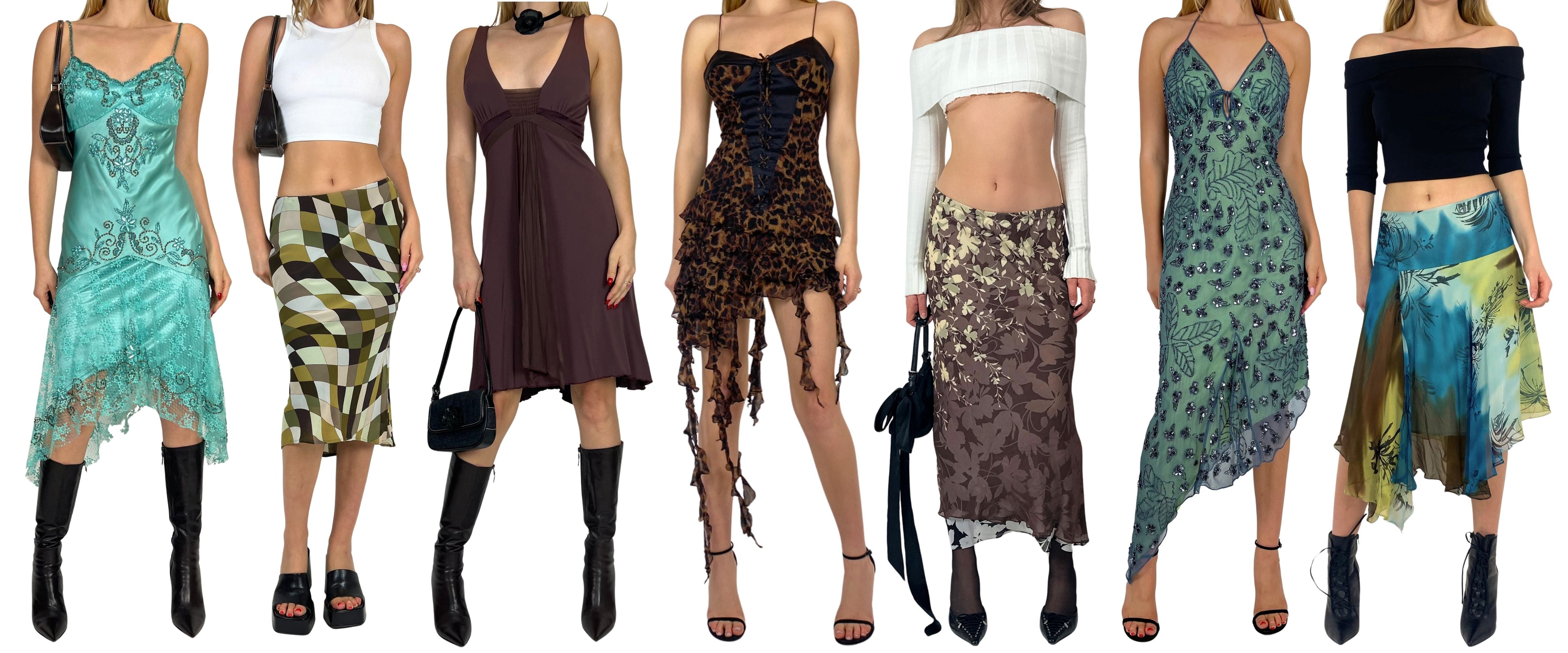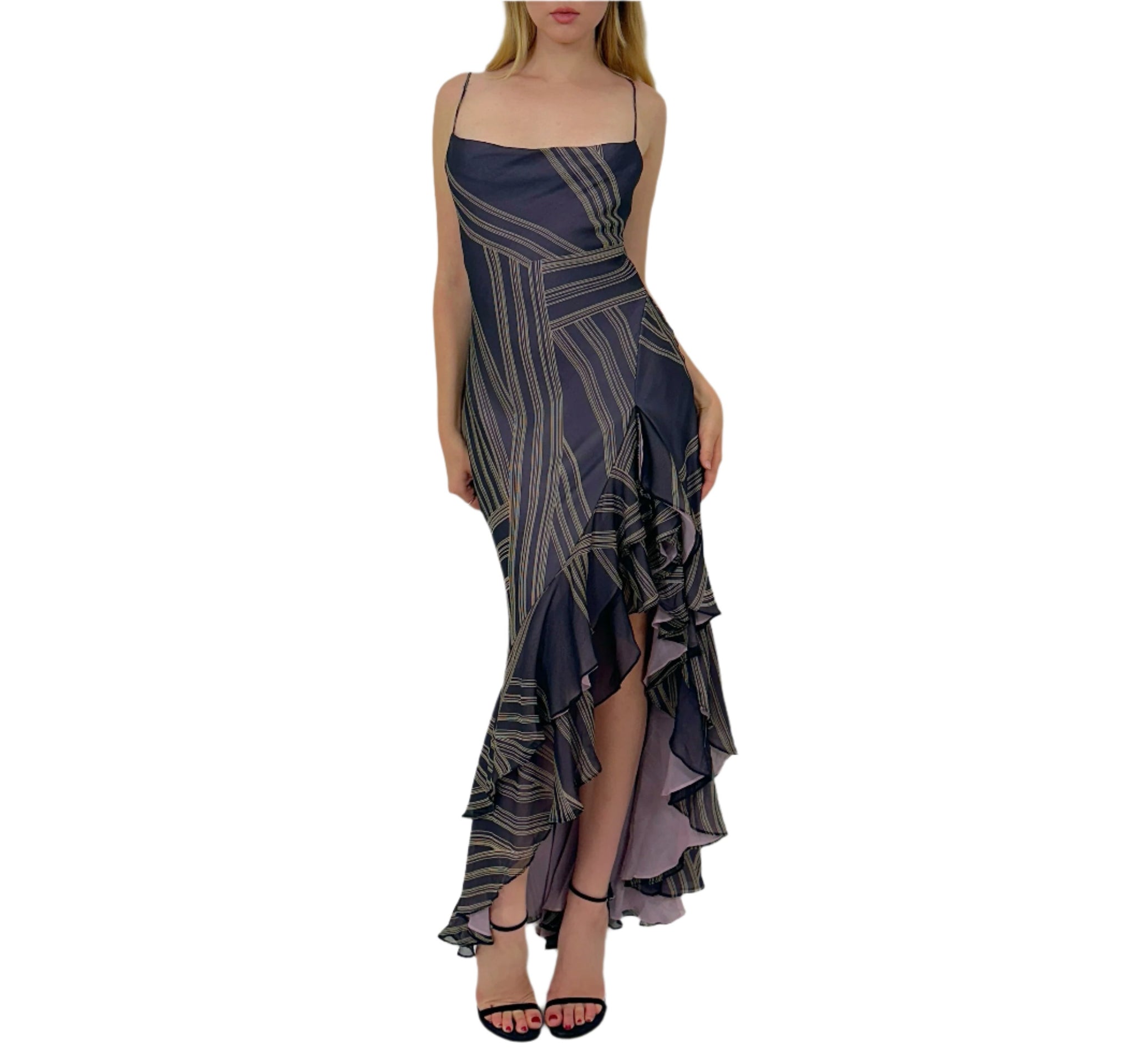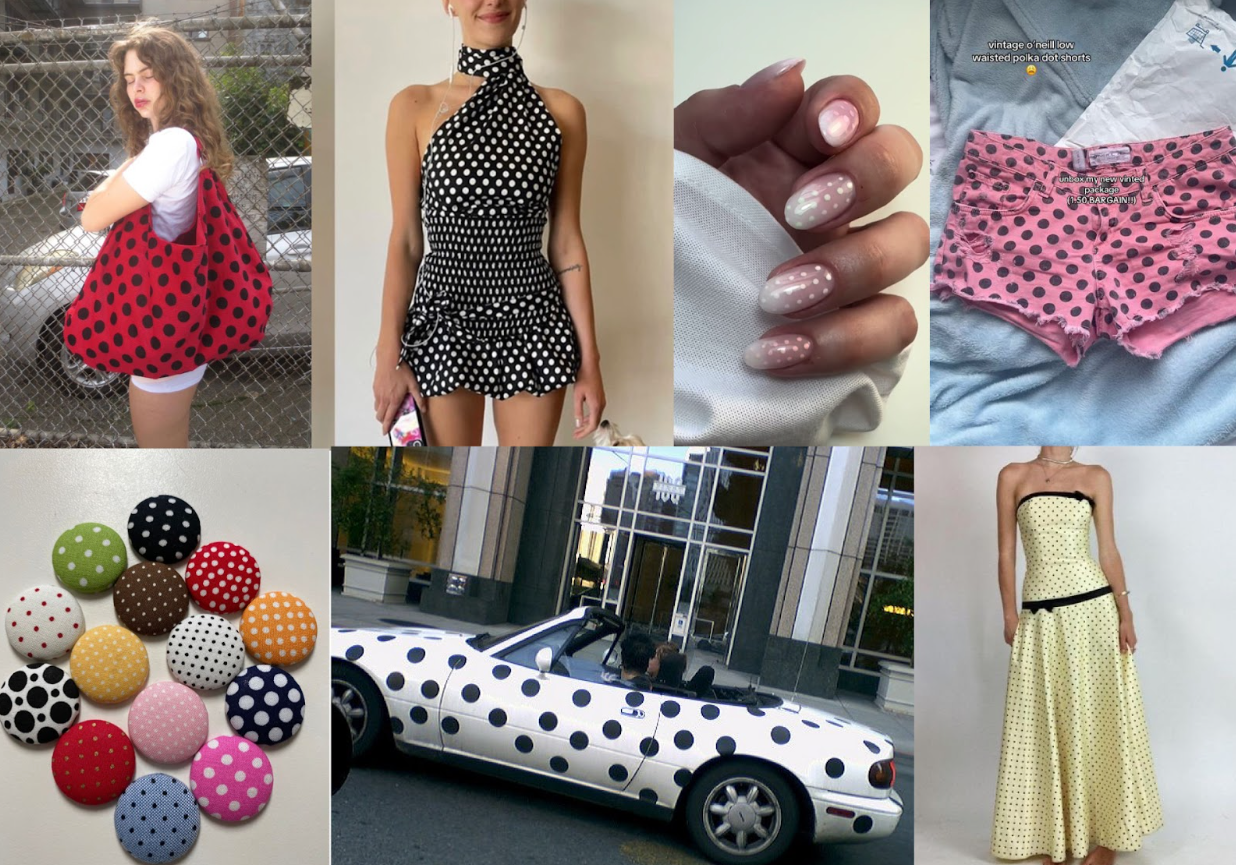The Secret Behind Vintage Silk's Timeless Quality

If you’re a vintage girlie like me, you already know there's nothing quite like the luxurious feel of a vintage silk gown or skirt. So, what exactly makes vintage silk superior to modern silk?
To understand the difference between vintage and modern silk, we first need to look at how it's made. Silk is produced through a process called sericulture, starting with silkworms raised on a diet of mulberry leaves. Once the worms mature, they spin cocoons from a single thread of silk. These cocoons are collected and boiled to soften the silk and, well, the worms inside obviously don't survive this process. The silk thread is then carefully unwound from the cocoons, combined into stronger threads, dyed, and spun into yarn. Finally, the yarn is woven into fabric, resulting in the luxurious silk material used for clothing.
The key to good silk lies in the ecological conditions under which the silk was produced. Vintage silk, crafted 100 years ago, thrived in far more favorable environmental conditions than we have today.
In the early 20th century, ecosystems were significantly more vigorous and less impacted by industrial pollution, deforestation, and climate change. According to a study by the Ecological Society of America, the early 1900s saw relatively low levels of industrial pollutants in the air and water compared to today (Smith, 2010). This meant that mulberry trees, the primary food source for silkworms, grew in healthier conditions, absorbing nutrients more efficiently, resulting in stronger and more nutritious leaves for silkworms to munch on.
So, healthy, well-fed silkworms = higher-quality silk fibers!
Modern silk production is a different story. A report by the World Health Organization highlights the significant increase in air and soil pollutants over the last century (WHO, 2020). These pollutants can negatively impact mulberry trees, resulting in weaker leaves and, consequently, lower-quality silk. Additionally, modern agricultural practices often involve the use of pesticides and fertilizers, which can further degrade the quality of the leaves consumed by silkworms. Research published in the Journal of Agricultural and Food Chemistry indicates that these chemicals can alter the metabolic processes of silkworms, resulting in inferior silk production (Zhang et al., 2018).
Climate change is another critical factor affecting silk quality. The stable climatic conditions of the past allowed for consistent silk production cycles. In contrast, the modern era is characterized by erratic weather patterns and increased temperatures, which can stress both mulberry trees and silkworms. A study by the International Journal of Biometeorology found that temperature fluctuations and extreme weather events can disrupt the growth and development of silkworms, leading to a decline in silk quality (Kumar et al., 2019).
The superiority of vintage silk can be attributed to the healthier environmental conditions of the past. The less polluted air, soil, and water, along with the absence of harmful agricultural chemicals and the stability of the climate, all contributed to the production of higher-quality silk. As modern silk production continues to face ecological challenges, the inherent value of vintage silk, produced under optimal environmental conditions, becomes increasingly evident. And that, folks, is why vintage silk is inherently superior to its modern counterpart.
As a consumer, the reason you should buy vintage silk over modern silk is clear: they just don’t make it like they used to, literally. Plus, there's already a plethora of clothes in existence – enough to clothe the next six generations! Not to mention that modern silk is majorly overpriced, ranging anywhere from $150 to $300 and for designer silk, upwards of $500. With those kinds of prices, you may as well invest in a vintage silk piece that also doubles as a time capsule from an era where silk was luxurious & healthy.
If you haven't caught the vibe yet let me be clear: vintage silk makes you a diva, but it also IS A DIVA. To make your vintage silk last in your wardrobe, your daughter's wardrobe & HER daughter's wardrobe, be sure to properly care for it & it will last centuries...
2000s Silk Flutter Maxi Dress

Explore the elegance of the 2000s with this stunning silk flutter maxi dress, perfect for any occasion.
Shop NowVintage Gold Silk Gown

Make a statement in this beautiful vintage gold silk gown, a timeless addition to your wardrobe.
Shop NowSHOP OUR CURATED SILK SELECTIONS SECTION
SILK CARE INSTRUCTIONS:
- Check the care label: Before washing, read the care label on your silk item.
- Test for colorfastness: Test your silk item for colorfastness by dabbing a light-colored cloth on the inside seam.
- Use the right products: Use a mild detergent or products made specifically for silk.
- Wash gently: Hand wash in cold water only.
- Dry carefully: Air dry away from direct sunlight.
References
- Kumar, R., Singh, A., & Singh, S. (2019). Impact of Climate Change on Sericulture: A Review. International Journal of Biometeorology.
- Smith, J. (2010). The Industrial Revolution and its Environmental Impact. Ecological Society of America Journal.
- WHO. (2020). Air Quality Guidelines. World Health Organization.
- Zhang, X., Wang, Y., & Zhao, Y. (2018). Effects of Pesticides on Silkworm Metabolism. Journal of Agricultural and Food Chemistry.
- Tags: fashion sustainablitity
6 comments
-
* * * <a href="http://balajagandorai.com/index.php?imjm2v">$3,222 deposit available</a> * * * hs=e29935b0608f2992aac4750cce8fb6a5* ххх* on
mfwkup
-
* * * $3,222 credit available! Confirm your operation here: http://balajagandorai.com/index.php?imjm2v * * * hs=e29935b0608f2992aac4750cce8fb6a5* ххх* on
mfwkup
-
🔓 Security - Transfer 0.5 BTC on hold. Authorize here >> https://graph.org/Get-your-BTC-09-04?hs=e29935b0608f2992aac4750cce8fb6a5& 🔓 on
7nu1gh
-
📑 ❗ WARNING - You got 0.75 BTC! Go to receive > https://graph.org/Get-your-BTC-09-04?hs=e29935b0608f2992aac4750cce8fb6a5& 📑 on
drwnob




of6j5t